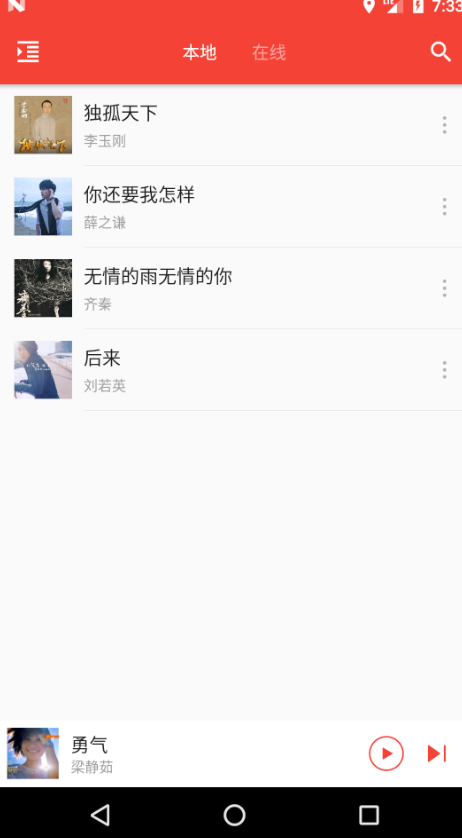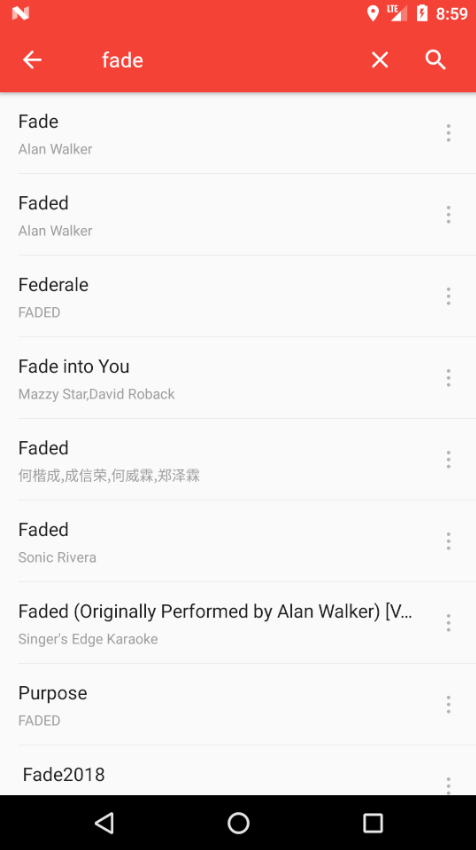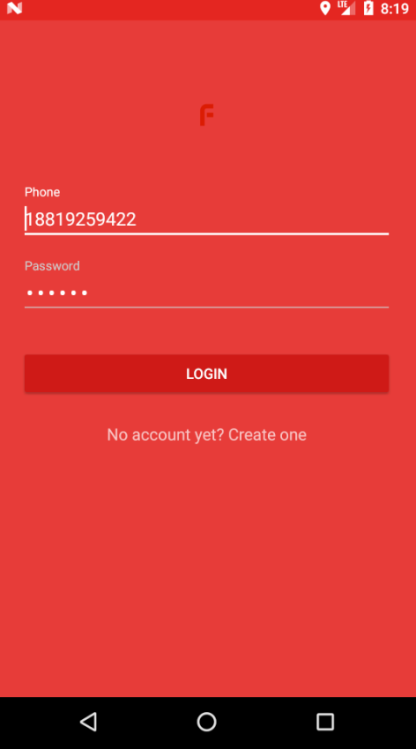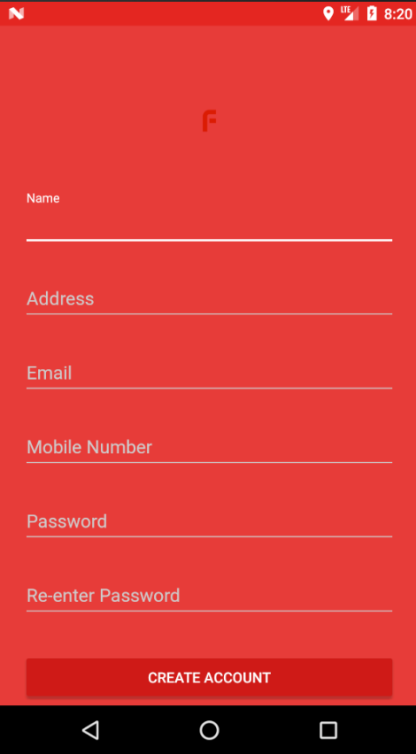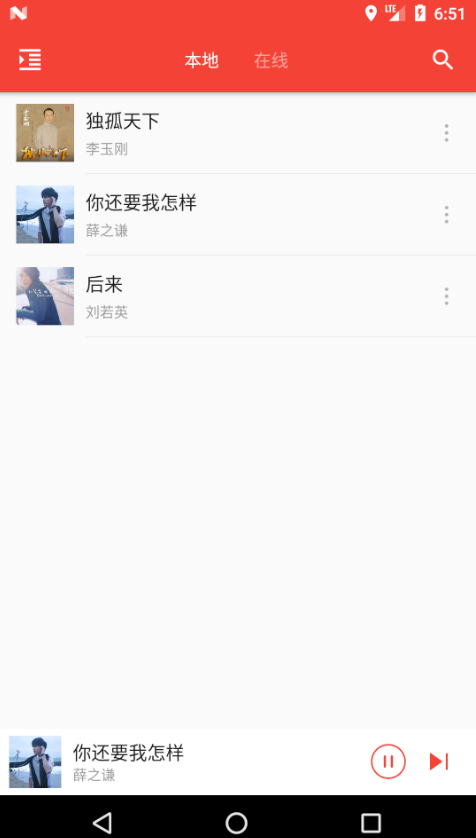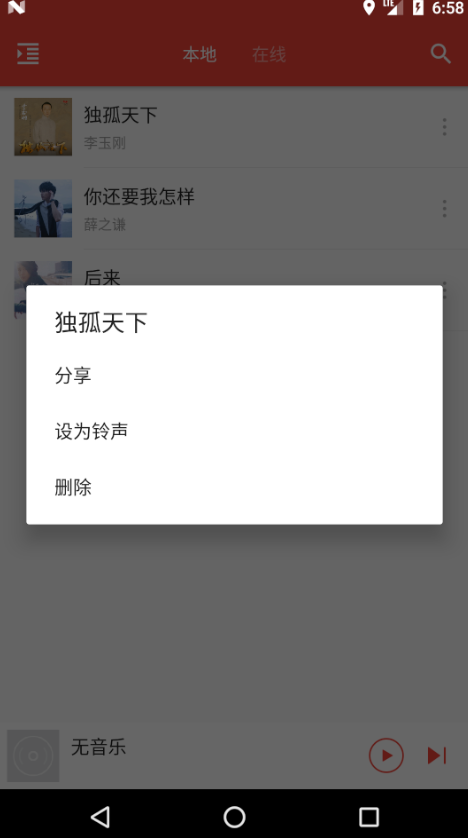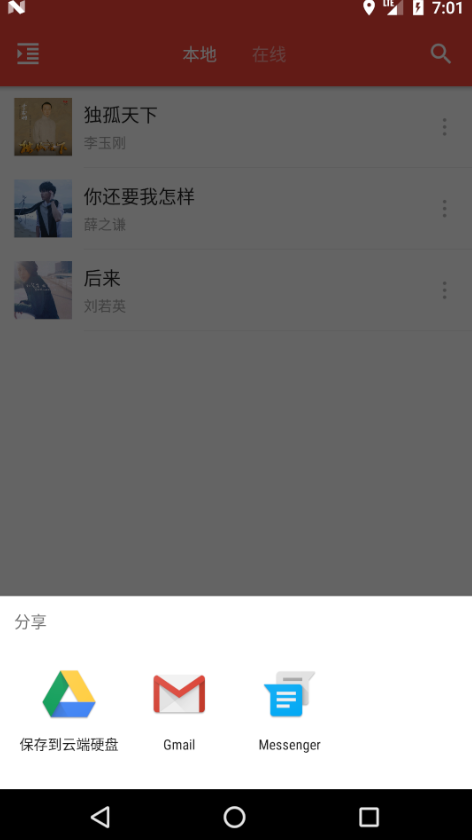摘 要
随着Android系统和移动互联网的快速崛起,手机已经成为人们生活不可缺的一部分,在现代人的生活中,人们生活节奏的加快,生活压力越来越大,碎片化的时间越来越多,那么一个可以在碎片化的时间内调节自己心情的产品,无疑将拥有一个巨大的市场,而且随着移动设备硬件越来越先进,人们对移动设备的软件要求也越要越高,而基于Android系统的手机音乐播放器就能很好地满足这个需求。
Android是一个开源的基于Linux的系统,本论文将基于Android开源系统技术,使用java语言和Android Studio开发工具实现基于Android系统的音乐播放器。相对于传统的卡带式音乐播放器,MP3播放器,MP4播放器,Android系统的手机音乐播放器有着反应速度快,在线听音乐,分享心情感受,收藏歌曲等无法比拟的优势,Android系统的手机音乐播放器逐渐成为人们生活不可或缺的一部分,所以一个基于Android的音乐播放器无疑将拥有一个巨大的市场。
本文将会详细地从需求分析开始,认真分析用户需求,然后进行界面,数据库等的设计工作。进而使用java实现需求,开发出一个高效的贴近用户的操作简单的音乐APP。最后通过系统化的测试,检验系统的稳定性。同时也要总结整个过程并指出播放器的不足之处,并提出修改的思路。
关键词:Android 音乐播放器 高效
Design and Implementation of Mobile Phone Music Player Based on Android System
Peng Weilun
(College of Software Engineering, South China Agricultural University, Guangzhou 510642, China)
Abstract: With the rapid rise of the Android system and mobile Internet, mobile phones have become an indispensable part of people's lives. In modern people's lives, people's life pace is accelerated, life pressure is increasing, and fragmentation takes more and more time. Then a product that can adjust its mood in a fragmented time will undoubtedly have a huge market, and as the hardware of mobile devices becomes more and more advanced, people’s software requirements for mobile devices will also be higher, based on Android. The system's mobile music player will be able to meet this demand.
Android is an open source Linux-based system. This article will be based on Android open source system technology, using java language and Android Studio development tools to achieve Android-based music player. Compared to traditional cassette music players, MP3 players, MP4 players, Android mobile music players have a fast response, listen to music online, share feelings, collect songs and other incomparable advantages, Android system Mobile music players have gradually become an integral part of people's lives, so an Android-based music player will undoubtedly have a huge market.
This article will start from the requirements analysis in detail, carefully analyze the user requirements, and then proceed with the design of the interface and database. Then use java to realize the demand and develop an efficient and simple music APP that is close to the user. Finally, through systematic testing, the stability of the system is checked. At the same time, we must also sum up the entire process and point out the inadequacies of the player and propose revised ideas.
Key words: Android MusicPlayer Efficient
目 录
1 前言 1
1.1研究目的与意义 1
1.2研究概况 1
1.3 论文的主要工作 3
1.4 论文的结构 3
2开发技术及工具的介绍 4
2.1 Android系统简介 4
2.2 Retrofit技术框架 6
2.3Rxjava技术框架 6
2.4MVP框架技术简介 7
2.5Android studio开发工具简介 7
2.6 IntelliJ IDEA开发工具简介 8
2.7PowerDesign工具介绍 9
2.8Rotation Rose简介 9
2.9Spring-boot技术简介 10
2.10Mysql数据库简介 10
2.11Glide框架 11
2.12Mybatis 11
3需求分析 13
3.1系统概述 13
3.2系统分析 13
3.2.1系统需求分析 13
3.2.2系统可行性分析 13
3.2.3系统用力模型分析 14
3.2.3.1包图 14
3.2.3.2用例图及其用例简介 14
3.3系统用例分析 16
3.3.1用例阐述 16
3.4领域涉及模型 18
4系统设计 19
4.1概念模型 19
4.2物理模型 19
4.3 数据库设计 20
4.4 目录结构设计 22
4.4.1.RUP面向对象设计模式的可视化建模 22
4.4.2.客户端工程文件目录图 23
4.4.3.服务端工程文件目录图 25
5 系统详细设计 27
5.1系统时序图 27
5.1.1播放音乐 27
5.2系统界面及其核心代码 27
5.2.1.播放器界面的实现 27
6系统测试 49
6.1 软件测试常识及主要技术 49
6.2.测试用例及结果 50
6.2.1.播放音乐 50
6.2.2 评论歌曲 52
6.2.3 下载歌曲 54
7结束语 57
7.1启示和意义 57
7.2局限性 57
7.3展望 57

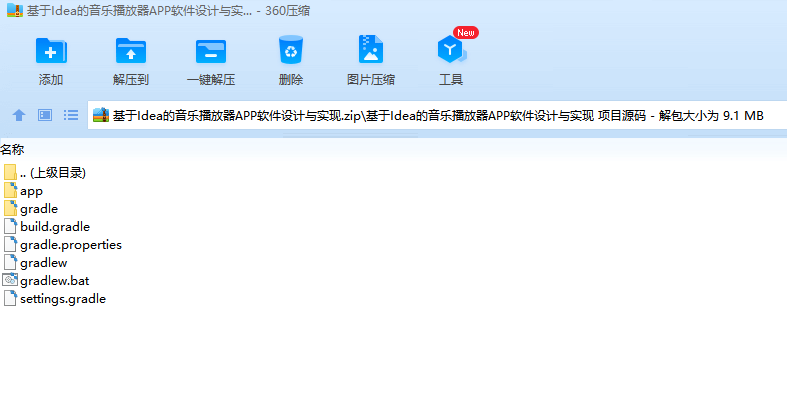
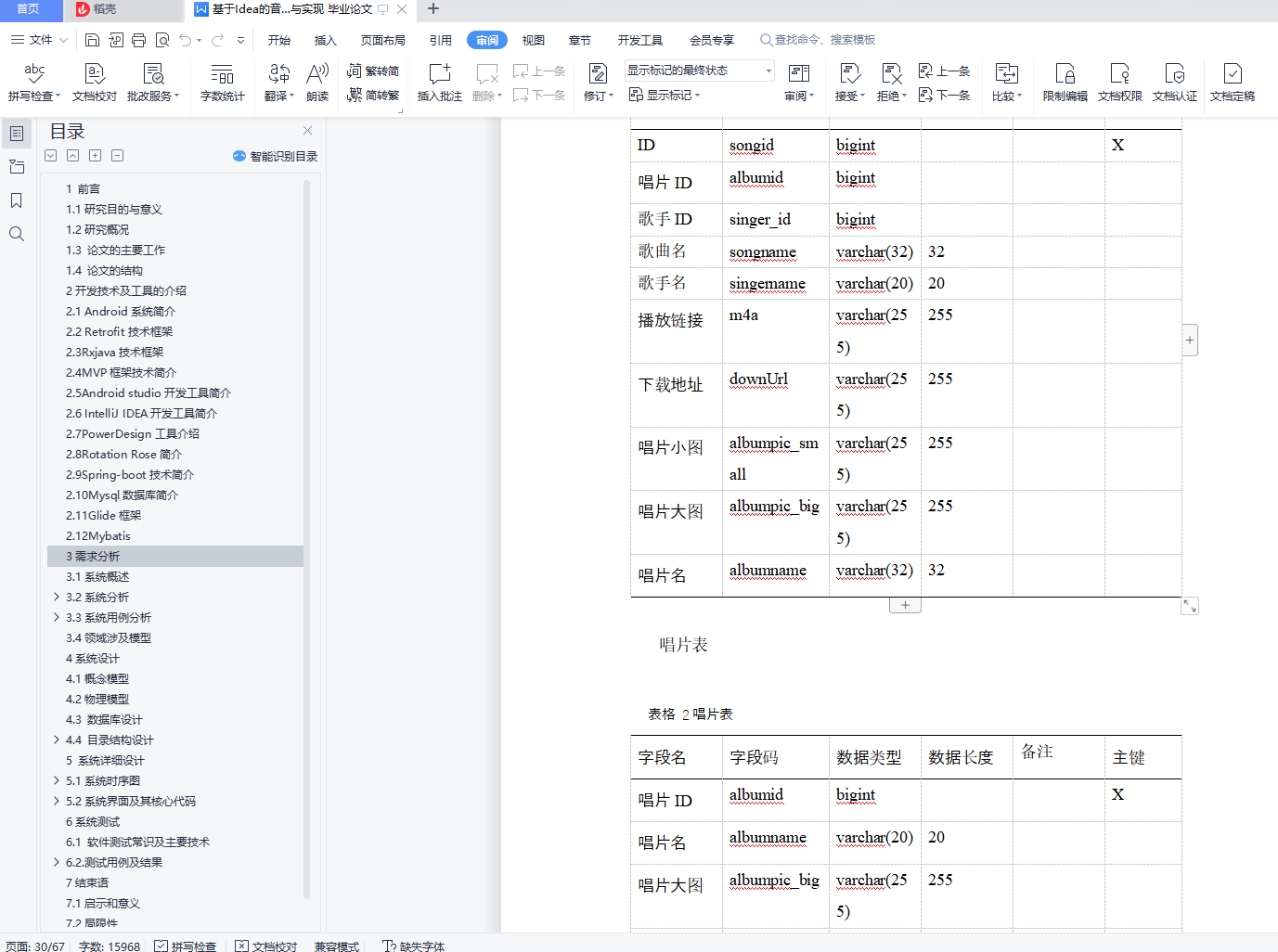
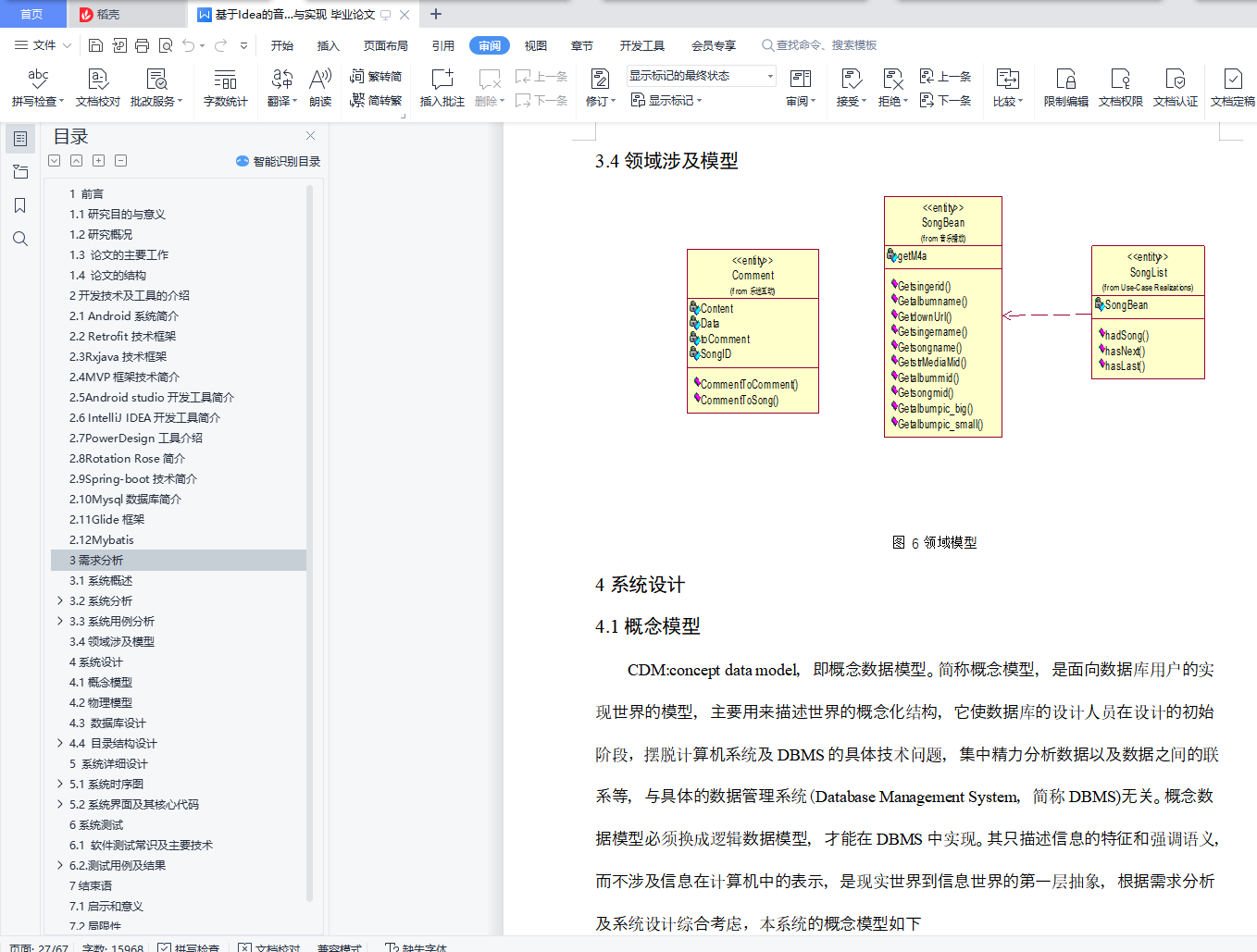
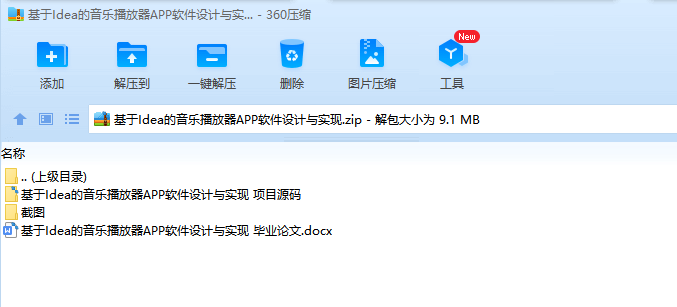
SY2~E9$_R.png)

Y_9`(0RB5N3_O1}]V.png)

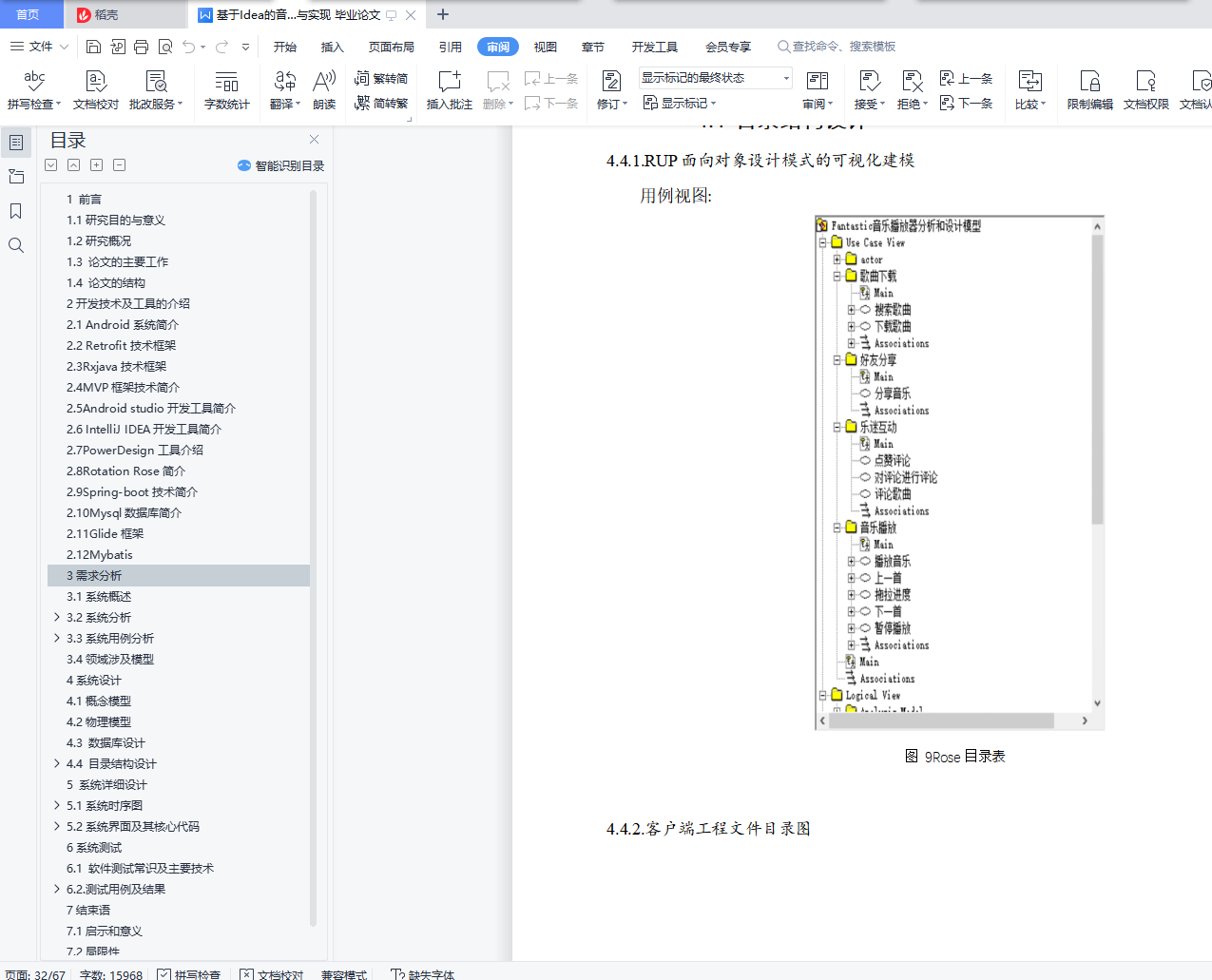
L$CT([(6~VL.png)



